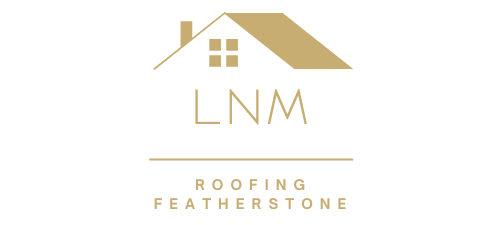Common Problems Found During Roof Surveys
Regular roof surveys are essential for identifying issues before they escalate into costly repairs or structural failures. At LNM Roofing Featherstone in Featherstone, West Yorkshire, we conduct detailed inspections that help property owners understand the true condition of their roofs. Whether for preventative maintenance or part of a homebuyer report, roof surveys reveal a range of common problems that can compromise the safety, efficiency, and value of a building.
Why Roof Surveys Matter
Roofs are constantly exposed to the elements, and even well-installed systems can deteriorate over time. Many issues remain hidden to the untrained eye, which is why professional surveys are so valuable. Identifying minor faults early can prevent extensive damage later.
1. Damaged or Missing Tiles and Slates
One of the most frequent findings in any roof survey is broken, cracked, or missing roof coverings. This can allow water to penetrate the underlay and structure beneath.
Key signs and causes:
- Cracks from frost damage
- Slates slipping due to failed fixings
- Wind-lifted or storm-damaged tiles
- Debris in gutters from fragmented tiles
If left unchecked, these issues lead to leaks and internal water damage.
2. Failed or Inadequate Flashings
Lead flashing is used around chimneys, valleys, and roof junctions to prevent water ingress. Over time, flashings may deteriorate, crack, or become loose.
Survey findings often include:
- Perished or poorly fitted leadwork
- Gaps forming due to movement or shrinkage
- Water stains near chimneys or abutments
Flashing problems are a major source of roof leaks and should be addressed promptly.
3. Roof Sagging or Structural Movement
Sagging areas in pitched roofs can indicate deeper structural concerns such as undersized timbers, overloaded insulation, or long-term water ingress.
Typical indicators:
- Noticeable dip in the roofline or ridge
- Bowing of rafters or ceiling joists in the loft
- Cracks appearing in internal ceilings
These issues require structural assessment to avoid safety risks and costly repairs.
4. Blocked or Damaged Gutters and Valleys
A roof’s drainage system is essential for directing rainwater safely away from the structure. During a survey, we often find debris-filled or poorly aligned gutters and blocked valleys.
Problems caused include:
- Overflowing water soaking into masonry
- Ice damage in winter due to trapped water
- Sagging gutters detaching from fascia boards
Keeping gutters clear is one of the simplest ways to preserve roof health.
5. Poor Roof Ventilation
Inadequate ventilation in the loft or roof void leads to condensation, damp, and even timber rot. Surveys frequently uncover signs of moisture where ventilation is lacking or obstructed.
Common signs:
- Mould on insulation or rafters
- Water droplets forming on timber
- Stale air and musty smells in loft spaces
Modern ventilation systems can prevent these issues and extend the life of the roof.
6. Deteriorated Underfelt or Membranes
The underlay beneath tiles or slates acts as a secondary weatherproofing barrier. In older roofs, this material can become brittle, torn, or sag between rafters.
Issues detected in surveys:
- Visible sunlight from inside the loft
- Damp patches on underfelt
- Degraded membrane allowing dust and water ingress
Replacing underfelt may be necessary during major repairs or re-roofing.
7. Moss, Algae and Vegetation Growth
Organic growth on roofing materials may appear cosmetic, but it often signals moisture retention, material deterioration, or blocked drainage.
Hazards include:
- Water retention accelerating freeze–thaw damage
- Moss lifting tiles and exposing gaps
- Algae staining reducing kerb appeal
Professional cleaning and moss prevention can help protect the roof’s surface.
8. Chimney Stack Issues
Chimneys are often overlooked but are a key part of roof surveys. Cracked render, leaning stacks, or loose pots can pose serious hazards.
Frequent chimney-related findings:
- Crumbling mortar between bricks
- Detached or corroded flashing around stack base
- Blockages or bird nests within flues
Addressing chimney faults early ensures both safety and weatherproofing.
Why Choose LNM Roofing Featherstone?
At LNM Roofing Featherstone, we deliver detailed roof surveys for residential and commercial properties in Featherstone, West Yorkshire. Our inspections highlight current faults, potential future problems, and practical repair recommendations. Whether you’re planning maintenance, preparing to buy a property, or simply ensuring your roof is sound, our experienced team is here to help you make informed decisions.
Conclusion
A professional roof survey is a smart investment that uncovers hidden issues and protects your property from preventable damage. From missing tiles to hidden leaks and structural defects, early detection ensures timely repairs and peace of mind. To schedule a thorough roof inspection in Featherstone, contact LNM Roofing Featherstone and ensure your roof remains safe, efficient, and weatherproof all year round.
Call us on: 01977 802 587
Click here to find out more about LNM Roofing Featherstone
Click here to complete our contact form and see how we can help with your roofing needs.

